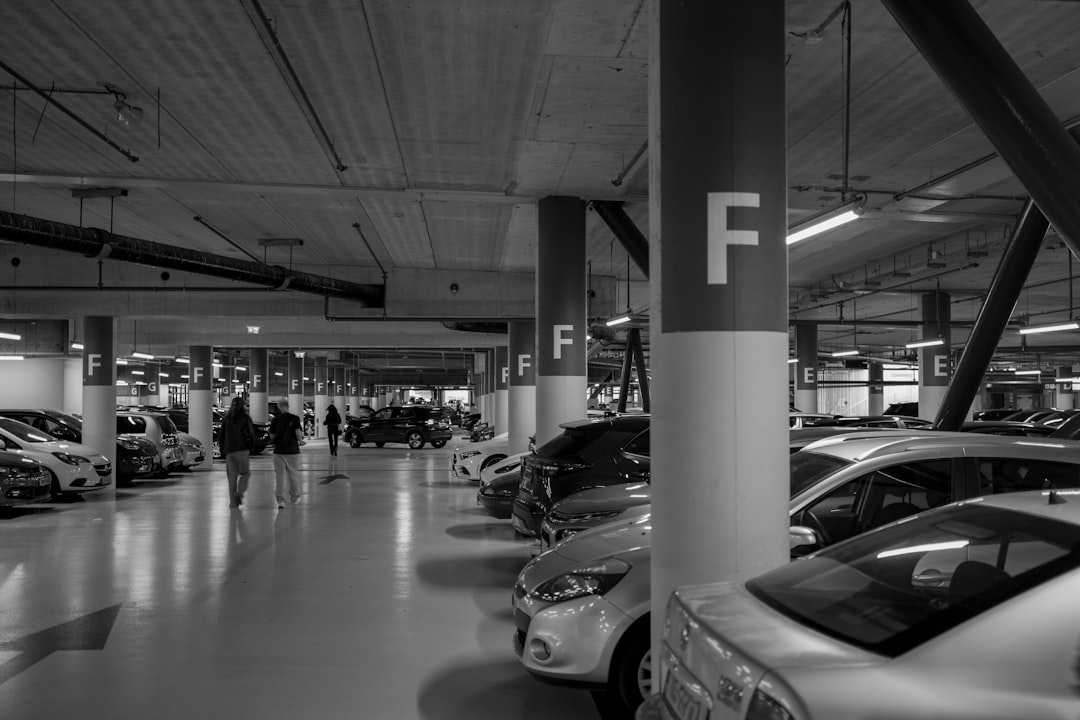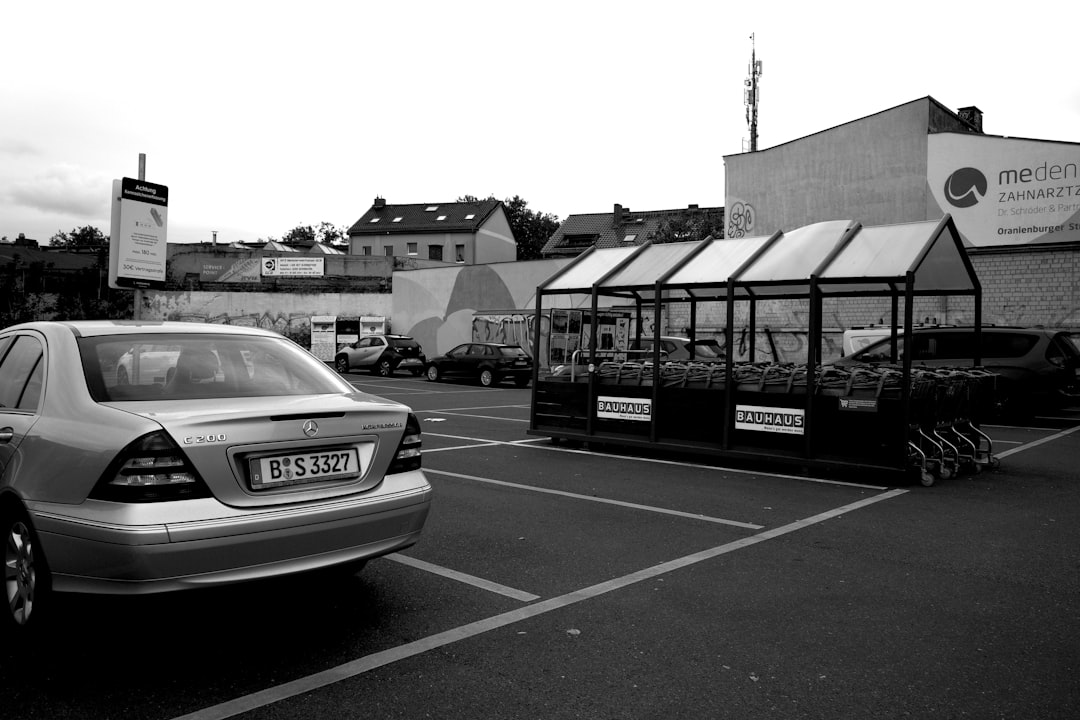

Engage prospects with a scan and streamline customer engagement with FREE QR code marketing tools by Sona – no strings attached!
Create a Free QR CodeFree consultation

No commitment

Engage prospects with a scan and streamline customer engagement with FREE QR code marketing tools by Sona – no strings attached!
Create a Free QR CodeFree consultation

No commitment
In today’s digitally driven world, QR codes in marketing have evolved from a novelty to a strategic powerhouse, connecting offline interest to measurable online action. For auto service contract providers, QR codes create a direct path from physical materials to conversion points such as quote requests and customer support. A scan takes seconds, requires no app, and removes the friction that often causes prospects to abandon traditional forms or delay outreach.
The result is a more responsive, data-rich lead generation engine. By placing QR codes on printed quotes, service center signage, direct mailers, invoices, and dealership counters, providers can capture intent signals at the moment of interest, attribute results to specific placements, and trigger personalized follow-up automatically. This approach closes offline-to-online gaps, reduces manual work, and gives sales teams the visibility they need to prioritize the highest-intent opportunities.
By harnessing QR code technology, auto service contract providers move beyond outdated processes that leave too many prospects untracked and too many follow-ups delayed. QR-enabled campaigns accelerate marketing outcomes, enrich CRM data, and increase conversion rates through faster, more relevant engagement. The guidance below will help you embed QR codes across your customer journey to turn every touchpoint into a measurable, results-driven entry point to your funnel.

QR codes bridge the gap between physical touchpoints and digital outcomes, making it easier for auto service contract providers to drive real business goals like lead generation, quote requests, and policy purchase intent. When placed on everyday materials such as service invoices, counter signage, or mailed promotions, a single scan can route a prospect directly to a mobile-optimized form or a personalized quote calculator. This eliminates the delay and drop-off common with manual form fills, toll-free numbers, or general email inboxes.
One of the largest frustrations in this industry is prospect drop-off. Shoppers examine brochures or review in-branch offers but remain invisible to the CRM if they never complete a form. Unique QR codes solve this by attributing every scan to a specific asset, location, or offer. Providers gain a complete view of channel performance while prospects enjoy a frictionless path to next steps.
Here is how to harness their full power:
By removing reliance on manual follow-up or delayed form fills, providers move interested buyers into a digital pipeline immediately. Dynamic QR generation and real-time CRM integration ensure that every scan is attributed, enabling sales teams to act fast on real purchase intent. This process replaces analog handoffs like paper forms and toll-free numbers with instant, trackable digital engagement.

Auto service contract marketing often lacks visibility into how offline materials perform. Brochures, in-branch displays, and invoices spark curiosity, but without a direct path to action, interested prospects remain anonymous. High-intent buyers slip through the cracks, and marketing teams struggle to justify spend or refine their strategies. QR codes make every print asset and in-person interaction measurable by turning them into gateways to digital experiences.
The benefits extend beyond practicality, as noted in marketing with QR codes. Dynamic QR codes allow providers to update destinations even after printing, so compliance terms, pricing promotions, and policy features can stay current without reprinting materials. They also add trackability to historically opaque channels like direct mail and in-store signage. For auto service contract providers, this translates into faster response times, higher conversion rates, and a consistent method for proving impact.
Key reasons QR codes matter in this vertical:
By integrating QR codes across your materials, you transform passive impressions into measurable engagement while maintaining compliance and staying nimble with campaign updates.

Different stages of the buyer journey require different paths to action. A prospect comparing policy tiers at a dealership needs a quick way to access a coverage table. A policyholder calling about a renewal needs instant access to FAQs or a support request. A service customer ready to explore extended coverage needs a simple route to a quote. QR codes support these needs with a variety of formats and destinations.
While many formats exist, auto service contract providers gain the most value from web links, forms, vCards, and SMS or email triggers. These formats route scanners to experiences that reduce friction, increase speed, and make follow-up reliable and trackable.
Useful formats in this vertical:
With Sona QR, you can generate and manage these formats centrally, tie each code to its campaign, and measure performance in one place.
Auto service contract providers often have strong offline presence but limited insight into what truly drives contract conversions. Without measurement, spend on print and in-dealership materials is difficult to optimize, and promising leads are lost to slow or generic follow-ups. QR codes make offline moments measurable, helping teams double down on the placements that generate the most pipeline.
The most impactful growth opportunities emerge where attention is focused and intent is high. Service counters, waiting rooms, showroom tables, and direct mail pieces are all prime placements. When each location and asset has a unique QR code, you can compare performance and reallocate budget to the top performers.
Use QR codes to unlock growth by:
With consistent tracking, providers replace guesswork with evidence. Campaigns can then progress from broad, static efforts to targeted, performance-driven programs that grow both acquisition and lifetime value.

There are recurring moments in the auto service contract journey where buyers show interest but slip through the cracks. Post-maintenance visits, contract renewals, and disclosure reviews are all points where momentum can stall. QR codes turn these moments into measurable actions and clear next steps for both buyers and teams.
The most effective use cases align closely with decision-stage needs and operational bottlenecks. When QR codes are embedded where customers already engage, providers see more quote requests, clearer compliance understanding, and more consistent feedback loops.
When each use case is tied to a destination built for mobile, scan-to-action completion rates rise significantly. Dynamic QR codes further ensure that content stays updated as policies, promotions, or regulations change.
Every QR scan is a behavioral signal. It captures intent, context, and the buyer’s stage in the journey. By deploying unique QR codes across placements and content types, providers can automatically segment audiences based on what they scanned, where they scanned it, and when they engaged. These segments can then fuel precise retargeting through email, SMS, or paid media. For deeper tactics, use Sona’s retargeting playbook.
This approach addresses a major pain point for auto service contract providers: distinguishing high-intent prospects from casual browsers. Instead of treating all scan activity the same, you can prioritize quote seekers, renewal shoppers, and service-only visitors differently. That targeting effort saves budget and increases close rates.
Here is how to build retargeting audiences with QR data:
Industry-specific distinctions to consider include new vehicle purchasers versus used buyers, owners nearing factory warranty expiration versus long-term owners, and policyholders evaluating renewal versus those exploring add-on coverage. Each group deserves tailored messaging that reflects their needs and readiness to buy.
Disconnected channels create fragmented journeys. A buyer sees a compelling message but encounters friction at the next step or disappears because there is no way to attribute interest. QR codes act as connectors, linking offline impressions to online experiences and enabling instant action that keeps momentum alive.
When QR codes are embedded across your mix, every asset becomes measurable. Brochures drive traffic to calculators, direct mail links to personalized offers, and events feed segmented leads to your CRM. Centralized management through a platform like Sona QR lets you track scans, compare performance, and sync insights to your sales and marketing tools.
Examples of how QR codes enhance the marketing mix:
QR codes serve as the offline on-ramp to your digital marketing engine and unlock a layer of measurement for channels that were once hard to track. With Sona QR, you can manage codes across every campaign, monitor engagement in real time, and connect scan activity to your CRM and ad platforms for end-to-end attribution.
Launching a QR program is straightforward when you follow a disciplined plan. Start by aligning each code to a clear business goal, ensure the scanning experience is fast and mobile-friendly, and wire your data to flow into your systems for accurate attribution and timely follow-up.
Below is a simple five-step checklist tailored for auto service contract providers. Use it to move from idea to live campaign while minimizing risk and maximizing ROI.
A clear plan prevents scattered deployments that are hard to measure. Work in short cycles, start with high-traffic placements, and expand once your scanning and conversion data validate the approach.
Proving impact is a perennial challenge for auto service contract providers. Traditional channels like brochures, showroom signage, and mailers generate interest but offer few clues about who engaged or what content moved the needle. QR codes change that by giving you a measurable signal at the moment of interest and by tying offline engagement to concrete outcomes such as calls, form fills, and signed contracts.
Modern analytics solutions go beyond scan counts. With dynamic QR codes and platforms like Sona QR and Sona.com, you can see which campaigns and locations generate the highest-intent actions, identify when scans spike, and understand who is scanning. Identity resolution and multi-touch attribution then connect scans to known contacts and revenue events in your CRM, helping you allocate budget to what works.
What to track and why it matters:
When tracking is set up correctly, you replace ambiguity with evidence. That evidence supports smarter creative, better offers, and faster growth.
Scaling a QR program requires consistent execution and cross-team alignment. Small details such as CTA clarity, design contrast, and landing page speed can dramatically impact scan rates and conversions. The good news is that these are easy to refine once you are measuring performance across placements.
Focus on tips that match the most common media in this vertical, such as invoices, service desk signage, printed quotes, and direct mail. Pair those placements with automation and CRM integration so buyers receive timely, relevant follow-up without added workload on your teams.
Consistent testing and iteration turn QR from a tactical experiment into a durable growth channel that compels action and proves its value every quarter.

QR code success in the auto service contract space often comes from small, repeatable wins. The most effective campaigns combine smart placement with clear CTAs and fast mobile experiences. Use the examples below as inspiration for your next deployment, then adapt the placements and messages for your market and product mix.
Each of these plays emphasizes clarity and usefulness. They work because they meet customers where they are, offer instant value, and feed data into systems that act on it quickly.
Even simple QR deployments benefit from expert-level attention to detail. Scan rates, form completion, and follow-up response can swing dramatically based on small choices such as CTA text, landing page load time, and code contrast. Equally important is avoiding common pitfalls that undermine trust or break the measurement chain.
Focus on the essentials:
QR codes are more than a shortcut for auto service contract providers. They are a practical strategy for solving persistent challenges in lead generation, attribution, and customer engagement. By embedding trackable codes across invoices, brochures, signage, and mailers, providers capture high-value prospects who might otherwise remain anonymous, enable timely follow-up, and connect offline behavior to measurable business outcomes.
With a unified platform like Sona QR for code creation, deployment, and analytics, and Sona.com for identity resolution and revenue attribution, auto service contract providers gain the agility to respond to real buyer signals, demonstrate compliance transparency, measure what works, and optimize continuously. The result is increased lead quality, improved revenue visibility, and a modernized customer journey that is both efficient and accountable.
QR codes have revolutionized the auto service contract providers industry by transforming traditional lead generation into a streamlined, data-driven process. They empower providers to capture qualified leads effortlessly, enhance customer engagement, and deliver personalized experiences that build trust and accelerate sales. Imagine instantly knowing which marketing collateral drives inquiries and conversions—turning every customer interaction into a measurable opportunity.
With Sona QR, you gain access to dynamic, trackable QR codes that can be updated in real time without costly reprints. This means you can optimize campaigns on the fly, connect each scan directly to revenue, and gain actionable insights into customer behavior. Start for free with Sona QR today and harness the full potential of QR technology to capture more leads and close more contracts with confidence.
QR codes enable auto service contract providers to connect offline materials to digital actions, increase lead capture, improve tracking and attribution, speed up buyer engagement, and allow dynamic updates without reprinting.
Providers should select use cases aligned to clear business goals, choose dynamic QR codes for tracking and flexibility, design codes with clear CTAs, deploy them at high-impact touchpoints, and integrate tracking for continuous optimization.
Static QR codes link to fixed content and are suitable for one-off uses, while dynamic QR codes allow tracking, destination updates, testing, and compliance changes without reprinting materials.
QR codes are inexpensive to produce and easy to deploy across multiple touchpoints, making them a cost-efficient solution scalable across dealerships and mail campaigns.
Sona QR is a leading platform that offers centralized code generation, real-time analytics, CRM integration, dynamic code management, and retargeting capabilities for auto service contract providers.
Effective placements include service invoices, dealership counters, waiting room signage, direct mailers, vehicle folders, glovebox inserts, and post-service flyers.
QR codes reduce friction by routing prospects directly to mobile-optimized forms or quote calculators, capture intent signals tied to specific assets or locations, and trigger automated, timely follow-up through CRM integration.
Web links to landing pages, mobile-optimized forms, vCards for contact sharing, SMS or email triggers for pre-populated messages, and dynamic links for content updates are most valuable.
QR codes provide scan data by channel, location, and time, allowing providers to identify high-performing placements, audience segments, and campaign outcomes, which supports budget allocation and creative testing.
Use high-contrast codes at appropriate sizes, include clear benefit-driven CTAs, avoid reflective or curved surfaces, train staff to promote scanning, rotate creatives regularly, and choose dynamic codes for flexibility.
They can create unique codes by buyer journey stage and use case, segment audiences by scan behavior and location, then sync data to CRM and ad platforms for personalized email, SMS, and paid media retargeting.
Use cases include instant quote requests, review and feedback collection, legal disclosure access, contract renewals, and promotional offers at points like service visits, mailers, and dealership counters.
QR codes link offline assets such as brochures, direct mail, events, and digital signage to measurable online experiences, enabling unified tracking, real-time engagement, and data-driven decision making.
Define clear goals, select appropriate QR code types, design and test codes for usability, deploy across relevant channels with staff coordination, and track and optimize performance using analytics.
Tracking allows providers to identify which channels and locations generate the most conversions, understand audience behavior, attribute revenue to campaigns, and optimize marketing spend.
Avoid low visibility or contrast, placing codes on reflective or curved surfaces, neglecting staff training, failing to refresh creatives, and using static codes for content that changes frequently.
Use Sona QR's trackable codes to improve customer acquisition and engagement today.
Create Your FREE Trackable QR Code in SecondsJoin results-focused teams combining Sona Platform automation with advanced Google Ads strategies to scale lead generation

Connect your existing CRM

Free Account Enrichment

No setup fees
No commitment required

Free consultation

Get a custom Google Ads roadmap for your business






Launch campaigns that generate qualified leads in 30 days or less.
